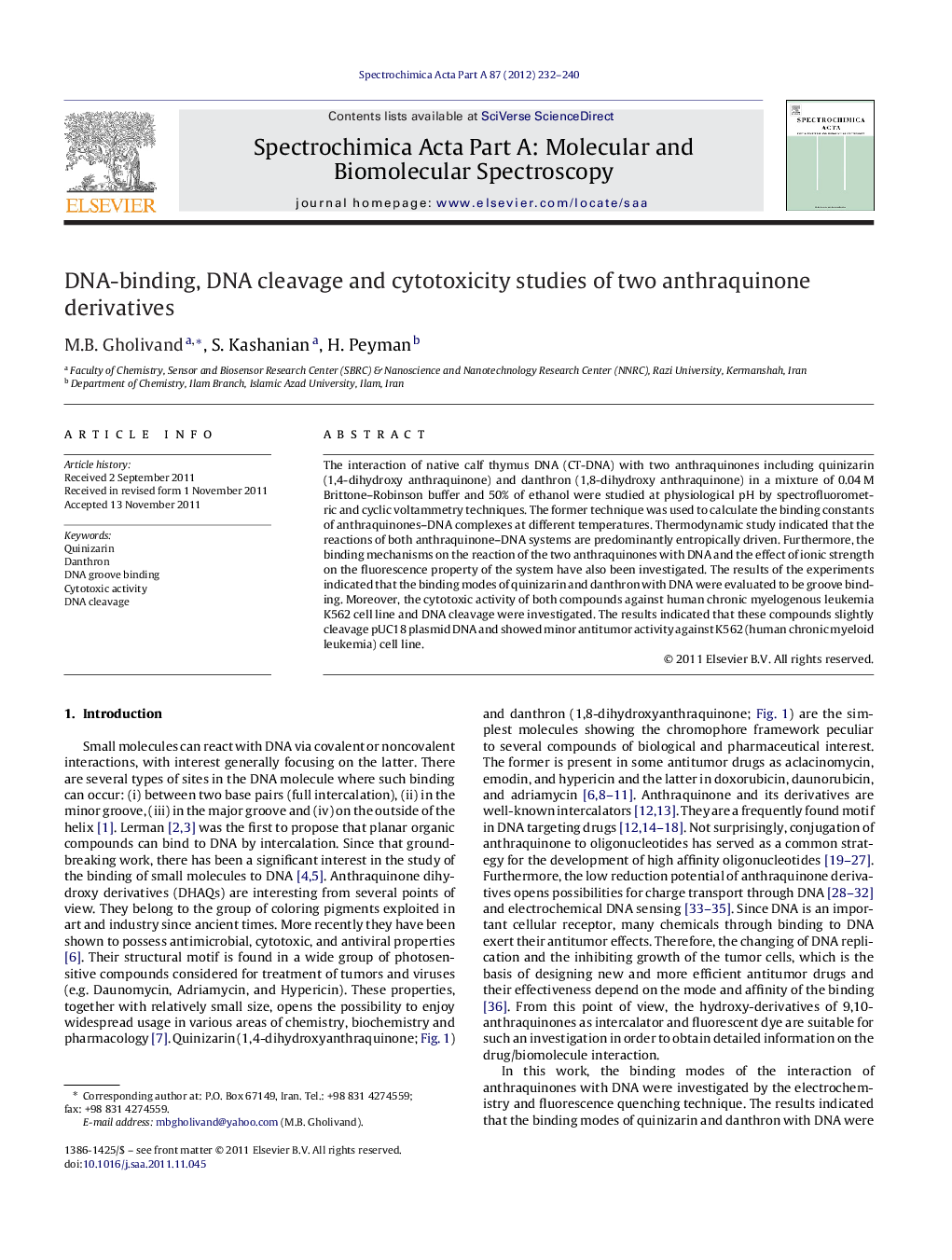| Article ID | Journal | Published Year | Pages | File Type |
|---|---|---|---|---|
| 1235838 | Spectrochimica Acta Part A: Molecular and Biomolecular Spectroscopy | 2012 | 9 Pages |
The interaction of native calf thymus DNA (CT-DNA) with two anthraquinones including quinizarin (1,4-dihydroxy anthraquinone) and danthron (1,8-dihydroxy anthraquinone) in a mixture of 0.04 M Brittone–Robinson buffer and 50% of ethanol were studied at physiological pH by spectrofluorometric and cyclic voltammetry techniques. The former technique was used to calculate the binding constants of anthraquinones–DNA complexes at different temperatures. Thermodynamic study indicated that the reactions of both anthraquinone–DNA systems are predominantly entropically driven. Furthermore, the binding mechanisms on the reaction of the two anthraquinones with DNA and the effect of ionic strength on the fluorescence property of the system have also been investigated. The results of the experiments indicated that the binding modes of quinizarin and danthron with DNA were evaluated to be groove binding. Moreover, the cytotoxic activity of both compounds against human chronic myelogenous leukemia K562 cell line and DNA cleavage were investigated. The results indicated that these compounds slightly cleavage pUC18 plasmid DNA and showed minor antitumor activity against K562 (human chronic myeloid leukemia) cell line.
Graphical abstractBinding interaction of quinizarin and danthron with calf thymus DNA (CT-DNA) has been investigated by instrumental method, also, DNA cleavage and cytotoxicity effect has been studied. The binding mode was determined to be groove binding.Figure optionsDownload full-size imageDownload as PowerPoint slideHighlights► Quinizarin and danthron exhibit a high binding affinity for CT-DNA. ► The results show quinizarin and danthron bind to DNA via groove binding. ► Different instrumental methods were used to investigate the interaction mechanism. ► Thermodynamic studies indicate that the binding action of quinones and CT-DNA is endothermal reaction. ► Cytotoxicity effect of quinones increases in a dose- and time-dependent manner.
